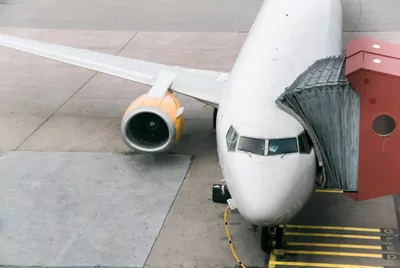Why it Matters
Offsetting your unavoidable CO2 emissions is a practical and immediate way to take ownership of your personal contribution to climate change. With COTAP, you’re addressing global economic inequality too. Offsetting also reveals both the need for cleaner energy sources and opportunities for reducing your carbon footprint.
CO2 Reduction Tips & Where Offsetting Fits In
Reduce Your Carbon Footprint From Driving
Alternatives to driving
When possible, walk or ride your bike in order to avoid carbon emissions completely. Carpooling and public transportation drastically reduce CO2 emissions by spreading them out over many riders.
Drive a low carbon vehicle
High mileage doesn’t always mean low CO2 emissions. All vehicles have an estimated miles-per-gallon rating. Electric vehicle (EV) emissions can vary widely depending on when and where you charge them, but even on the dirtiest power grids, EV’s achieve MPG equivalents which are significantly better than gas-powered vehicles. Incentives, gas savings, and favorable EV utility rate plans often work together to make switching to cars like the the Nissan Leaf very attractive.
Get cargo racks instead of a large vehicle
Don’t buy a minivan or SUV if you will only occasionally need the extra space, because you’ll be getting poor mileage every day. A receiver hitch and a rack like this one only cost a few hundred bucks. Rooftop cargo boxes increase aerodynamic drag and decrease fuel economy more, but that’s still better than driving an oversized car every day. Why get 50 weeks per year of bad gas mileage for extra cargo space you only really need for 2 weeks per year?
Reconsider buying an all wheel drive (AWD) or 4 wheel drive (4WD) vehicle
Similar to avoiding a large vehicle if you only occasionally need the extra space, consider avoiding a AWD or 4WD vehicle if you only sporadically “go to the snow” during the winter. Again, why get 50 weeks per year of bad gas mileage for a feature you only really need for 2 weeks per year?
Driving style
Speeding and unnecessary acceleration reduce mileage by up to 33%, waste gas and money, and increase your carbon footprint.
Tire inflation and other tuning
Properly inflated tires improve your gas mileage by up to 3%. It also helps to use the correct grade of motor oil, and to keep your engine tuned, because some maintenance fixes, like fixing faulty oxygen sensors, can increase fuel efficiency by up to 40%.
Avoid traffic
Being stuck in traffic wastes gas and unneccessarily creates CO2. Use traffic websites and apps and go a different way or wait.
Misc.
- Combine errands to make fewer trips.
- Remove excess weight from your car.
- Use cruise control.
Reduce Your Carbon Footprint From Air Travel
Avoid Flying, Fly Less Frequently, and Fly Shorter Distances
Worldwide, aviation accounts for 2% of all human-caused CO2 emissions and 12% of transportation CO2 emissions. Current Sustainable Aviation Fuel (SAF) production is .1% of petroleum-based fuels. So, for the forseeable future, the only options are to avoid flying, fly less frequently, and fly shorter distances.
Take More “StayCations”
Take fewer and longer vacations that are far away, and more frequent and driveable “staycations” closer to home.
Fly Fewer Round Trips
Rent a car or take a train one-way for half of your journey instead of round trip flight.
Work Air Travel
Increase your use of video-conferencing tools like Zoom, Skype, Google Meet, and Facetime.
Ditch the Miles
All airline mileage programs are simply loyalty schemes and they have one purpose: to entice you to fly more… more frequently and for longer distances. Donate your airline miles to COTAP and cancel your mileage plan memberships – and you’ll probably find yourself flying a lot less.
What Class?
Economy class is best, for the same reasons as carpooling and public transportation. Each flyer’s share of a flight’s carbon emissions is relatively less because it’s spread out over more people.
That’s Economy class
When Prince William flies economy class, he’s leading by example. Then there’s Prince Alwaleed bin Talal al-Saud, or the Sultan of Brunei, who buys entire economy-size planes and convert them into flying palaces.
Don’t fly on Private Jets
In a sense, private jet travel is simply economy/first/business writ large: it should be minimized if not avoided. In terms of CO2 emissions per passenger mile flown, private jets result in the highest emissions by far. If you must fly on private jets, at least select a provider like Paramount Business Jets, which enables you to calculate and offset your emissions.
Don’t buy a Honda
HondaJet, that is. Their cars are fine, though.
Don’t be a space tourist
Watch NOVΛ on PBS instead. Richard Branson’s “spaceline” Virgin Galactic seeks to right the injustice that “most of our planet’s seven billion people have had no opportunity to experience space” and Jeff Bezos’ Blue Origin promises “life-changing views” of what’s left of our planet.
Reduce Your Home Energy Carbon Footprint
Insulate and seal your home
Reduce drafts and air leaks with caulk, insulation, and weather stripping. Many states offer programs and incentives to facilitate this, and a great example is Energy Upgrade California.
Appliances
Make energy efficiency a primary consideration when choosing a new furnace, air conditioning unit, dishwasher, or refrigerator. Products bearing the ENERGY STAR label are recognized for having superior efficiency.
Lighting
Turn off lights you’re not using and when you leave the room. Replace incandescent light bulbs with compact flourescent or LED ones.
Thermostat
Don’t set it too high or low. Install a programmable model to turn off the heat/air conditioning when you’re not home.
Solar
Add solar panels to the roof of your home. This costs a little more than the above options, but many providers offer financing options which minimize upfront costs. Two examples are SolarCity and SunRun. If you live in a state with a Net Metering law, you could eliminate your electricity bill or even earn money by selling electricity back to the grid.
Reduce Your Carbon Footprint From Food
Eat locally-produced and organic food
It has been estimated that 13% of U.S. greenhouse gas emissions result from the production and transport of food. Transporting food requires petroleum-based fuels, and many fertilizers are also fossil fuel-based.
Cut the beef and dairy
It takes a lot of resources to raise cows, and it’s especially bad if you buy beef from somewhere like Brazil, where it was grazed on land that used to be tropical forest but was cleared for agricultural use. Deforestation is a top contributor to carbon emissions and thus climate change.
Other Ways to Reduce Your Carbon Footprint
Water usage
Lower the amount of energy used to pump, treat, and heat water by washing your car less often, using climate-appropriate plants in your garden, installing drip irrigation so that plants receive only what they need, and making water-efficient choices when purchasing shower heads, faucet heads, toilets, dishwashers and washing machines.
Reuse and recycle
It has been estimated that 29% of U.S. greenhouse gas emissions result from the “provision of goods,” which means the extraction of resources, manufacturing, transport, and final disposal of “goods” which include consumer products and packaging, building components, and passenger vehicles, but excluding food. By buying used products and reselling or recyling items you no longer use, you dramatically reduce your carbon footprint from the “provision of goods.”
Support clean energy sources
Whenever you can, advocate for clean alternatives to fossil fuels, such as wind, solar, geothermal, and appropriately designed hydroelectric and biomass energy projects.
Offsetting Your Carbon Footprint
COTAP’s Carbon Footprint Calculator
Quickly and accurately measure and offset your annual emissions from driving, flying, and home energy use.
Carbon offsetting should not be done in place of taking steps to reduce one’s carbon footprint. Carbon offsetting and carbon footprint reduction should be done in tandem. Measuring your carbon footprint not only reveals where you’re currently at, but also helps to identify areas for improvement and track your progress.
Offsetting the amount which you are not able to avoid empowers you to take full responsibility for your carbon pollution, which is your contribution to climate change. In this context, COTAP offers a unique and meaningful solution in that we focus on certified forestry projects in least-developed regions that create life-changing income for the world’s poorest people.
Join COTAP to Fight Climate Change!
Learn More About COTAP
To learn more, please see the Mission, Projects, How It Works, How We’re Different, Transparency, and Standards sections of our site and see our above menu.







